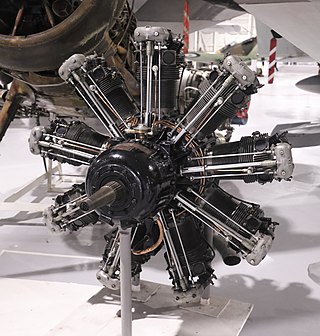
The Bristol Jupiter is a British nine-cylinder single-row piston radial engine that was built by the Bristol Aeroplane Company. Originally designed late in World War I and known as the Cosmos Jupiter, a lengthy series of upgrades and developments turned it into one of the finest engines of its era.

The Bristol Pegasus is a British nine-cylinder, single-row, air-cooled radial aero engine. Designed by Roy Fedden of the Bristol Aeroplane Company, it was used to power both civil and military aircraft of the 1930s and 1940s. Developed from the earlier Mercury and Jupiter engines, later variants could produce 1,000 horsepower from its capacity of 1,750 cubic inches by use of a geared supercharger.

The Vickers Type 131 Valiant was a British general-purpose biplane produced by Vickers in 1927, with the intention of replacing the Royal Air Force's Airco DH.9As, but was unsuccessful, with only a single example built, which was sold to Chile.

The Vickers Vildebeest and the similar Vickers Vincent are single-engined British biplanes designed and built by Vickers and used as light bombers, torpedo bombers and in army cooperation roles. First flown in 1928, they remained in service at the start of the Second World War, with the last Vildebeests flying against Japanese forces over Singapore and Java in 1942.

The Armstrong Siddeley Jaguar is an aircraft engine developed by Armstrong Siddeley. The Jaguar was a petrol-fuelled air-cooled 14-cylinder two-row radial engine design. The Jaguar III was first used in 1923, followed in 1925 by the Jaguar IV and in 1927 by the Jaguar VI. In 1925 the Jaguar became the first production aero engine incorporating a geared supercharger.

The Fairey Hendon was a British monoplane, heavy bomber of the Royal Air Force, designed by Fairey Aviation, and first flown in 1930. The aircraft served in small numbers with one squadron of the RAF between 1936 and 1939. It was the first all-metal construction low-wing monoplane to enter service with the RAF.

The Armstrong Whitworth Atlas was a British single-engine biplane designed and built by Armstrong Whitworth Aircraft. It served as an army co-operation aircraft for the Royal Air Force (RAF) in the 1920s and 1930s. It was the first purpose-designed aircraft of the army co-operation type to serve with the RAF.
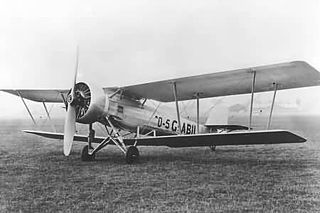
The Vickers Vespa was a British army cooperation biplane designed and built by Vickers Limited in the 1920s. While not adopted by Britain's Royal Air Force, small numbers were bought by the Irish Free State and Bolivia, the latter of which used the type during the Chaco War. One modified Vespa was used to set a world altitude record of 43,976 ft (13,407 m) in September 1932.
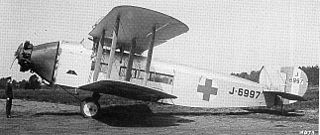
The Bristol Ten-seater and Bristol Brandon were British single-engine biplane transport aircraft built by the Bristol Aeroplane Company in the early 1920s. Only three were built, two of which were used as civil transports and one of which served with the Royal Air Force.

The Gloster SS.35 Gnatsnapper was a British naval biplane fighter design of the late 1920s. Two prototypes were built but the type did not enter production.

The Parnall Plover was a British single-seat naval fighter aircraft of the 1920s. Designed and built by George Parnall & Co. for use on Royal Navy aircraft carriers, it was ordered into small-scale production but after extensive evaluation, the Fairey Flycatcher was preferred for large-scale service.

The Bristol Bloodhound was a British two-seat reconnaissance/fighter aircraft designed and built by the Bristol Aeroplane Company as a possible replacement for the Bristol F.2 Fighter for the Royal Air Force. It was unsuccessful, only four prototypes being built.

The Vickers Vixen was a British general-purpose biplane of the 1920s. Designed and developed by Vickers in a number of variants, with 18 Vixen Mark V sold to Chile. A prototype of a version with metal wings was built as the Vickers Vivid. The Vixen also formed the basis of the closely related Venture and Valparaiso aircraft, which were also built and sold in small numbers in the 1920s
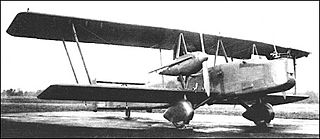
The Vickers Vanox was a British biplane bomber design intended as a successor to the Virginia for the Royal Air Force. Although it underwent extensive development, it was not successful, only a single aircraft being built.

The Gloster Goral was a single-engined two-seat biplane built to an Air Ministry contract for a general-purpose military aircraft in the late 1920s. It did not win the contest and only one was built.
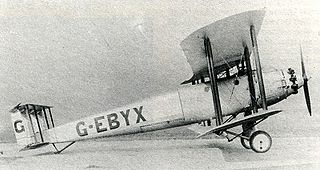
The Vickers Vellore was a large biplane designed as a freight and mail carrier, in single-engined and twin-engined versions, which saw limited use as freighters and long-range experimental aircraft. A final variant with a broader fuselage, the Vellox, was completed as an airliner.

The de Havilland DH.56 Hyena was a prototype British army cooperation aircraft of the 1920s. A single-engined biplane, the Hyena was designed against an RAF requirement, but was unsuccessful with only two being built, the Armstrong Whitworth Atlas being preferred.

The de Havilland DH.72 was a large British three-engined biplane bomber, designed as a Vickers Virginia replacement. It did not go into production.
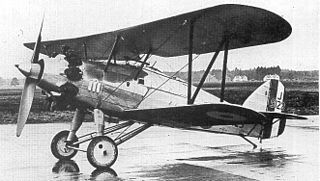
The Hawker F.20/27 was a British fighter design built to an Air Ministry specification for an interceptor in the late 1920s. It was a single-seat biplane powered by a radial engine; the very similar but V-12-engined Hawker Fury development proved superior and only one F.20/27 was built.

The Fairey Ferret was a 1930s British general-purpose biplane designed and built by the Fairey Aviation Company. It performed well in trials but was not ordered into production.





















